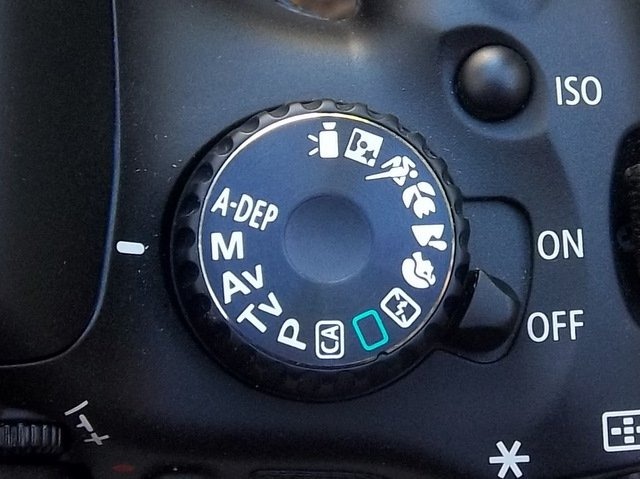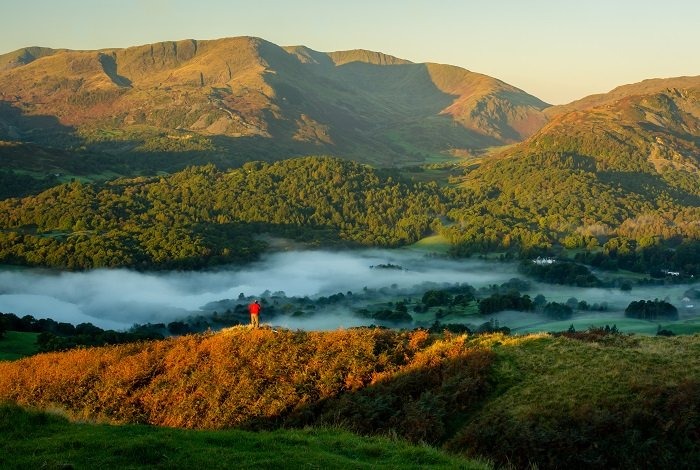Why You Should be Shooting in Manual Mode
by Alex W.
To say that technology has progressed a lot over the past few decades would be an understatement of massive proportion. The ease with which we can do almost any task, including the taking of photographs, is unprecedented. But sometimes convenience can be our subtle enemy.
Every single compact camera and DSLR on the market today is designed to be as simple as possible to use. You can take it out of the box, slide the battery in, and take a photograph within minutes. That’s not even mentioning the prolific smartphone use meaning we can capture an image almost instantaneously at any time of the day.
Contents
Unfortunately, all this convenience can actually have a detrimental impact on our photography, especially in the earlier stages of your learning. We need to get out of this autopilot mode and start thinking about each and every one of our photographs.

Here’s exactly why you should spin that dial on top of your camera and start shooting in Manual mode:
If you haven’t already, make sure to read and understand The Exposure Triangle.
Why Make Life Harder for Myself?

True, using your camera in automatic mode is incredibly easy, but it’s also limiting and with that convenience comes laziness. Letting the camera do all the work not only means that you don’t have full control over your photography, but it often leads to shooting images without even thinking.
When your camera is set to Automatic the electronics inside the camera body decides everything for you. This includes aperture, shutter speed, ISO, and focus, all to try and guess an image that was inside your mind all along. Wouldn’t it make much more sense to simply set the controls yourself, knowing exactly what it is you’re aiming for?
We learned in The Exposure Triangle that exposure is governed by three variables, and that these variables can have a massive effect on things other than just the brightness of some pixels on your sensor. Now that we know that we may as well put it to good use.
Imagine the scene: You’re shooting the sun setting over a beautifully lit landscape. On Automatic the camera selects a wide aperture and high ISO to combat the diminishing light, meaning you could come away with a noisy image with the foreground out of focus.
Imagine the same scene, but you’re controlling all the settings. You know that you need a narrow aperture to maintain a good depth of field and a low ISO to keep the image quality high, so you make sure to mount your camera on a tripod and simply lengthen the shutter speed to account for our narrow aperture and low ISO. You come away with a much better final image for a few seconds of extra work.
It makes sense that the camera works this way, but that automatic mode is aimed at those who just want some nice holiday snaps. We want you to take your photography to the next level here, and one of the first steps to doing this is to stop allowing the camera to make decisions for you.
How Does Shooting in Manual Help?
When we take control and set the camera to Manual mode we’re taking every exposure setting into our own hands. This allows us to fine tune our settings and get our image looking exactly how we envisaged it before pressing the shutter.
If you want those waves to be a little smoother you can simply spin a dial and lengthen the shutter speed rather than battling with the auto mode decisions.
Are you photographing your daughter playing outside but the photos keep coming out blurry? Widen the aperture and speed up your shutter to freeze the motion. It’s as simple as that!
This ability to fine tune our photos is undoubtedly the biggest advantage to shooting Manual, but another big reason I encourage all newcomers to try it out is because it forces you to think about your image every time you press that shutter button. This steadily improves your photography composition, which is never be a bad thing.
Thinking, Learning, Improving

We should be constantly striving to improve, and avoiding autopilot syndrome is one way to ensure continued development in your photography.
Setting your camera to manual is indeed a big step, and it definitely steepens the learning curve in photography. I don’t recommend it without very good reason though, and that reason is that I truly believe it puts you on the fast track to become a great photographer.
Rather than mindlessly snapping away you’re forced to think about every exposure and how each variable in the Exposure Triangle effects the final image. After just a few days of shooting like this I guarantee that you will gain a deeper understanding of exposure and put yourself well ahead of the curve in your photographic journey. I’ve met people who have been shooting for years and still don’t know the basics of exposure because they’ve never moved away from automatic, and that unquestionably limits their capacity for improvement.
When you’re tasked with setting everything manually it can seem daunting, but it eventually becomes second nature. Not only that, but habitually checking exposure tends to focus the mind, letting you become more aware of your photography process.
The end result of turning that little dial to “M” is disproportionally large – An increased understanding of the basics, a greater knowledge of photography, and a more focused image making process. Suddenly getting out of autopilot makes a lot of sense, right?
I’d love to hear how it went if you decided to take this step, and if there are any questions about shooting in manual please comment below!
You Might Like…
DSLR Starter Kit – The Best Entry-Level DSLRs You Can Buy
Must-Have Christmas Gift Ideas for Photographers
Ditch the JPEGs – Always Shoot in RAW
Beginners Guide to Composition
How Using a Tripod Can Make You a Better Photographer
 |
 |
 |
 |

About Alex W.
Alex is the owner and lead writer for Click and Learn Photography. An avid landscape, equine, and pet photographer living and working in the beautiful Lake District, UK, Alex has had his work featured in a number of high profile publications, including the Take a View Landscape Photographer of the Year, Outdoor Photographer of the Year, and Amateur Photographer Magazine.
Thoughts on "Why You Should be Shooting in Manual Mode"
 |
 |
 |
 |
You can Get FREE Gifts. Furthermore, Free Items here. Disable Ad Blocker to receive them all.
Once done, hit anything below
 |
 |
 |
 |